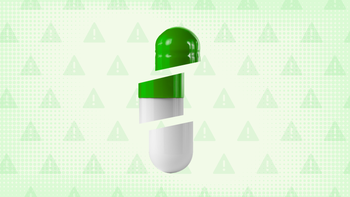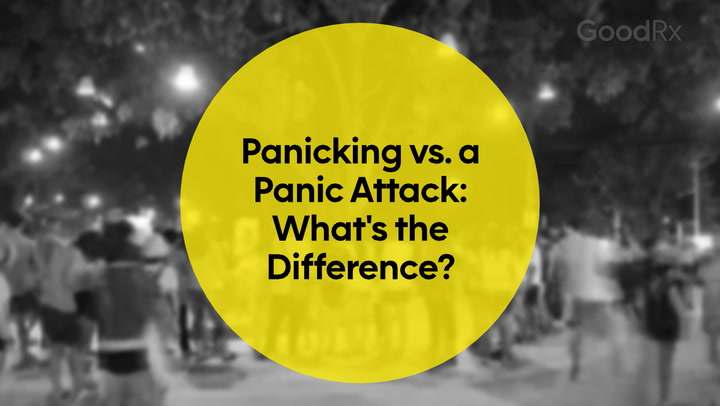
Everything You Need to Know About Panic Attack Symptoms
Key takeaways:
A panic attack is a sudden feeling of fear or dread that occurs along with a wide range of symptoms.
Panic attacks can cause physical symptoms — from shortness of breath, a fast heartbeat, and nausea to hot flashes, chills, tremors, and dizziness.
Panic attacks can also cause emotional symptoms, like feeling detached from yourself or your surroundings, worrying that you’re “going crazy,” or feeling scared that you’re about to die.
No matter the type of panic disorder symptoms you have — help is available. Both medication and therapy can be helpful, especially if you have recurring, severe attacks.
Table of contents
Have you ever been in a situation where you suddenly felt frozen with fear? Maybe your heart felt like it was going to jump out of your chest or you couldn’t stop shaking. You might have been experiencing a panic attack.
A panic attack is a medical term for a set of very specific symptoms that come on suddenly and last between 10 to 20 minutes before going away completely. They can start when you’re feeling anxious. They can also happen without any warning. During a panic attack, most people feel overwhelmed with fear, dread, and physical discomfort. Sometimes people might even feel afraid that they’re “going crazy” or that they might die.
If you think you might be having panic attacks or you’re wondering whether you need professional help — this is the guide for you. Read on for more information about how to manage panic attacks and what to do if you think they may be part of a panic disorder.
What is a panic attack?
Panic attacks are a sudden onset of intense fear, with at least four other emotional and physical symptoms (more on these below). The symptoms usually start suddenly — often with no clear reason — and can be very strong and frightening.
During a panic attack many people have a hard time functioning normally. As the attack fades the symptoms slowly go away. Symptoms are usually completely gone within 30 minutes.
Common panic attack symptoms
Panic attacks always cause sudden, overwhelming fear and discomfort. But beyond that, panic attacks can have many different symptoms. That’s why panic attacks can look different for different people.
For example, during a panic attack you could feel short of breath, have chest pain, and be shaking and sweating all over. Or you may have a totally different experience — an attack with dizziness, numbness, hot flashes, and nausea.
So why can panic attacks be so different? It’s because there are a lot of different “official” symptoms for panic attacks. And you don’t have to experience all of them.
According to the DSM-5, to qualify as a panic attack, you only need to have four (or more) of the following symptoms:
Palpitations, pounding heart, or fast heartbeat
Sweating
Trembling or shaking
Feeling breathless
A feeling like you’re choking
Chest pain or discomfort
Nausea or abdominal pain
Feeling dizzy, unsteady, light-headed, or faint
Feelings of being chilly or hot
Numbness or tingling
Feelings of unreality or being detached from yourself
Fear of losing control or “going crazy”
Fear of dying
In addition to the official DSM-5* symptoms, panic attacks can cause other symptoms, too. These can include:
A need to use the bathroom
Dry mouth
Ringing in your ears
A feeling of dread
Tense muscles
Chattering teeth
Crying
* The Diagnostic and Statistical Manual of Mental Disorders 5 (DSM-5) is a list of all recognized mental health disorders and their symptoms.
How long does a panic attack last?
How long a panic attack lasts varies from person to person. According to the DSM-5, symptoms are usually at their worst within 10 minutes of the start of the panic attack. Most panic attacks go away in 20 to 30 minutes. But they can last up to 1 hour.
Who gets panic attacks?
If you have panic attacks, you’re not alone. They’re quite common among adults. In fact, a study found that about 1 out of every 3 adults will experience a panic attack at some point during their life.
Risk factors for panic attacks
Certain groups of people seem to be more likely to have panic attacks than others. This includes women and people younger than age 65.
You might also have a higher risk of panic attacks or panic disorder if you have:
Heart or blood vessel problems (like coronary artery disease or high blood pressure)
Depression or anxiety
Drug or alcohol misuse or dependence
Seizures
Family member(s) who have panic attacks
Other mental health conditions
Recurrent panic attacks typically start during teen or young adult years, but they can begin at any age. They can also start during or after a major life event or if you’re going through a lot of stress.
What causes panic attacks?
There isn’t one known cause for panic attacks. When people have panic attacks, they experience intense fear in situations where most people do not. Their brains do not respond to signals in their environment in a normal way — they perceive a threat even though there isn’t one.
Researchers aren’t completely sure why this happens only in some people. But it’s probably a combination of genetics, early childhood experiences, and life trauma.
What triggers panic attacks?
Panic attacks can happen at any time, even with no clear trigger. But if you get panic attacks, you may have identified some situations or experiences that are likely to trigger an attack. Keep in mind that your triggers might not be the same as the triggers for someone else.
Some common triggers include:
Stress
Phobias (such as spiders or heights)
Social situations
Public speaking
Caffeine
Physical exercise
Changes in breathing
How do you calm a panic attack?
When you feel a panic attack starting, you might feel scared and out of control. Fortunately, there are some strategies you can use to help manage the attack — or possibly even stop it in its tracks. Preventing the attacks before they begin is a great approach, too. Let’s take a closer look.
What to do when you’re in the middle of a panic attack
It can be helpful to have a few tools on hand to manage an attack when it starts. If you’re working with a healthcare professional, they may also be able to recommend some helpful strategies. Here are some ideas to try:
Remove yourself from the situation that’s causing your panic attack.
Listen to music.
Take deep breaths. Inhale and exhale slowly.
Count to 10 slowly. Repeat, and count to 20 if necessary.
Talk to someone you trust.
Notice how your body feels, and recognize that it’s just a physical feeling.
How to prevent future panic attacks
Prevention is the best treatment for panic attacks. Talk to your healthcare provider if you’re having frequent panic attacks, or they’re interfering with your daily life. They can give you more information about treatments that can help prevent attacks, like medication and cognitive behavioral therapy (CBT).
Here are some other things you can do to help prevent future panic attacks:
Cut down on alcohol and caffeine. Both can make anxiety worse and trigger panic attacks.
Get some exercise every day.
Get enough sleep. Feeling exhausted can make the symptoms of anxiety and panic worse. The worse your symptoms, the worse your sleep. It’s a vicious cycle.
Can you die from a panic attack?
You can’t die from a panic attack, but it’s important to be able to tell the difference between a life-threatening medical condition and a panic attack. Even though you can’t die from a panic attack, you can die from some of the medical conditions that have symptoms similar to those you experience when you have a panic attack.
When you have a medical condition, you most likely will have other symptoms that people without panic attacks don’t have. For example, people with diabetes also have high blood sugar. People with lung conditions often have chronic coughs. People with bowel problems might experience bouts of diarrhea or constipation.
This table shows some of the symptoms that panic attacks and serious medical problems may share.
| Symptom | Heart condition | Lung condition | Bowel problem | Diabetes |
|---|---|---|---|---|
| Fast or pounding heart | ||||
| Sweating | ||||
| Trembling or shaking | ||||
| Breathlessness or choking | ||||
| Chest pain or tightness | ||||
| Nausea or stomach discomfort | ||||
| Dizziness | ||||
| Numbness and tingling |



























